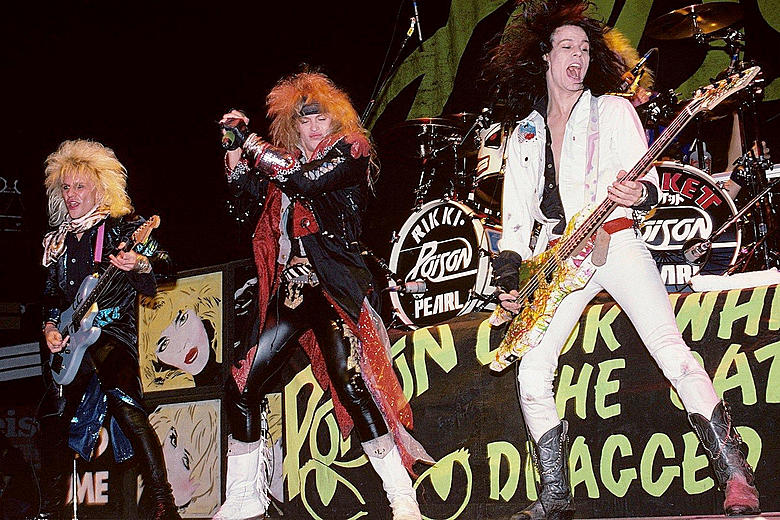The term “hair metal” is a paradox within the rock music world. While it’s commonly used to describe a specific style of pop-infused hard rock from the 1980s, true fans of the genre know that the label doesn’t truly capture the essence of the music. Despite the criticisms and oversimplification, “hair metal” remains a staple in pop culture, and certain bands have come to represent the epitome of this flashy, high-energy subgenre. Whether embraced or rejected, the “hair metal” label undeniably shaped a generation of music fans, and just as thrash metal had its “Big 4,” hair metal has its quartet of defining acts: Mötley Crüe, Def Leppard, Bon Jovi, and Poison.

Mötley Crüe: The Architects of Hair Metal
Mötley Crüe is often credited as the band that built the foundation of hair metal. Their debut album, Too Fast for Love, introduced a rebellious blend of metal, punk, and pop that was raw and unapologetic. With their sophomore release, Shout at the Devil, Mötley Crüe skyrocketed to fame, setting the standard for what hair metal would become with its catchy hooks, heavy riffs, and a dark, theatrical aesthetic. As the ’80s progressed, Mötley Crüe’s music and image became increasingly over-the-top, with albums like Theatre of Pain and Girls, Girls, Girls pushing the boundaries of rock ‘n’ roll excess. By the end of the decade, they released Dr. Feelgood, a chart-topping album that featured hits like “Kickstart My Heart” and “Dr. Feelgood,” solidifying their legacy as the quintessential hair metal band.
Def Leppard: From Hard Rock to Stadium Anthem Icons
While Def Leppard started as part of the New Wave of British Heavy Metal, they fully embraced the hair metal sound with their third album, Pyromania. Under the guidance of producer Robert John “Mutt” Lange, Def Leppard crafted anthems like “Rock of Ages” and “Photograph,” which combined soaring vocals, intricate guitar work, and a polished, radio-friendly production style. Their follow-up, Hysteria, took their success to new heights, producing six Top 20 hits and selling over 12 million copies in the U.S. alone. With their emphasis on tight songwriting and a willingness to incorporate pop elements, Def Leppard became one of the most commercially successful bands of the hair metal era, influencing countless other acts that followed.
Bon Jovi: The Kings of Pop Metal
No discussion of hair metal would be complete without mentioning Bon Jovi, the band that put the “pop” in pop metal. After two underwhelming albums, Bon Jovi hit their stride with Slippery When Wet, an album that produced three of the most iconic songs of the ’80s: “Livin’ on a Prayer,” “You Give Love a Bad Name,” and “Wanted Dead or Alive.” Bon Jovi’s blend of catchy melodies, heartfelt lyrics, and polished production made them instant superstars, a status they maintained with 1988’s New Jersey. Frontman Jon Bon Jovi’s charismatic stage presence and good looks, combined with Richie Sambora’s bluesy guitar work, ensured that Bon Jovi would remain a dominant force well into the ’90s and beyond, even as the hair metal scene faded.

Poison: The Embodiment of Hair Metal’s Excesses
If there’s one band that visually and sonically encapsulates hair metal, it’s Poison. Known for their outrageous makeup, teased hair, and party anthems, Poison’s debut album, Look What the Cat Dragged In, became a symbol of the genre’s carefree attitude. Songs like “Talk Dirty to Me” and “Nothin’ but a Good Time” are quintessential examples of hair metal’s fun, hedonistic spirit, while their ballad “Every Rose Has Its Thorn” remains one of the most enduring power ballads of the era. Poison’s flashy image and straightforward, hook-laden rock made them one of the most recognizable and commercially successful bands of the hair metal movement, even if their music was often overshadowed by their appearance.
